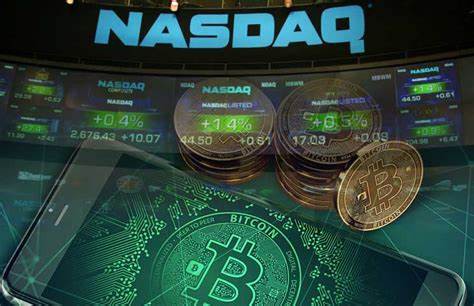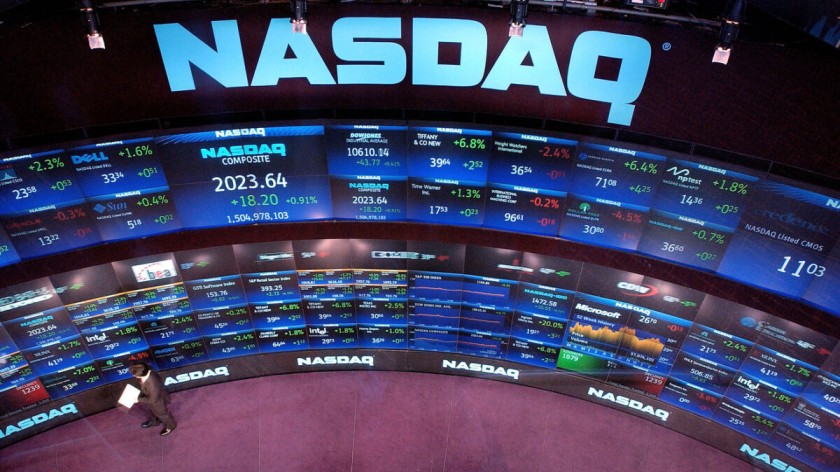NEWS
Nasdaq And Insider Trading: Understanding The Connection

Introduction
The damage insider trading and the lack of transparency it fosters do to the market’s reputation cannot be overstated. One of the world’s leading stock exchanges, NASDAQ, has been actively battling this illegal conduct to protect the importance of the listed companies.
The Dark Web, a new, dubious player that emerged as the internet matured, entered the insider trading industry. This mysterious area of the internet has developed into a hub for illegal activity, including the buying and selling personal information. The Dark Web has evolved into a safe sanctuary for those who seek to capitalize on their inside information without being identified, thanks to anonymity and encryption technologies.
NAIn recent years, SDAQ has become more aware of dark web insider trading techniques. They are taking a proactive posture by Exposing Dark Web’s Role in Insider Trading. NASDAQ endeavors to make the stock market open and fair to all investors by partnering with law enforcement agencies and using cutting-edge cybersecurity capabilities to take down these illicit networks.
Over View Of NASDAQ
Effects On The Economy And Nasdaq Stock Market Performance
NASDAQ is one of the biggest and most well-known stock exchanges (the National Association of Securities Dealers Automated Quotations). It was one of the first companies to use computers to facilitate stock trading when it began operating in 1971. Investors worldwide place their money in the NASDAQ because it is home to so many promising technology, biotech, and growth companies.
Insider trading is the act of buying or selling stocks while in possession of significant, sensitive information. These records are commonly kept by CEOs, employees, and other individuals with access to private company information. Individuals with access to this knowledge obtain an unfair advantage due to insider trading, which goes against the principles of free and open markets.
A Growth Analysis Of The Nasdaq
NASDAQ was established in 1971 by the National Association of Securities Dealers (NASD) to support investor electronic trading. It first met the needs of the tech industry in a significant part. Due to the wide variety of businesses it houses, NASDAQ has come to represent the growing significance of technology and innovation to the global economy and stock markets.
The Function Of Nasdaq In The Global Financial Markets
Since it serves as a hub for primary and secondary listings, NASDAQ is essential to the global financial system. The bourse is a focal point for emerging economic sectors because it focuses on proliferating startups. The outstanding liquidity and efficiency of the NASDAQ electronic trading system draw buyers and sellers from around the world.
Important Information Regarding Insider Trading
Insider trading is the act of buying or selling a security before the general public is aware of significant, private information. Board members or employees with access to personal information frequently become aware of such changes first. Penalties for crimes like insider trading in the securities business can be extremely severe.
Characteristics That Are Linked To An Insider Trading Inclination
Insider traders are executives, board members, and employees who have access to crucial non-public information before it becomes known to the general public. When there are rumors or insider details regarding a company’s financial performance, business strategies, potential mergers or acquisitions, or regulatory events, the price of its shares may change significantly.
The phrase “insider trading” describes various actions, such as shorting stocks before negative news is made public, buying and selling shares based on substantial insider information, and disclosing private information to third parties. Insider trading risks the bond and stock markets, which can be to certain stocks and an economy.
Rules And The Current Legal Framework
A. Laws And Regulations Regarding Nasdaq Insider Trading
Insider trading is prohibited and subject to punishment under two U.S. laws: the Securities Exchange Act of 1934 and the Securities Act of 1933. Implementing these rules and keeping an eye on the NASDAQ and other securities markets is the responsibility of the U.S. Securities and Exchange Commission (SEC).
B. How Governmental Organizations Help Identify And Punish Insider Trading
Regulating bodies like the SEC have a crucial role in observing trade behavior and identifying insider trading cases. They employ cutting-edge monitoring and data analysis tools to spot unusual trading patterns and investigate violations. When evidence of insider trading is found, regulatory agencies take legal action to prosecute offenders and impose penalties.
C. Institutional Insider Trading Participants And Organizational Penalties And Repercussions
Anyone guilty of insider trading faces hefty financial fines, jail time, the return of ill-gotten gains, and other civil penalties. Businesses that are shown to have lax internal controls or lax corporate governance practices that encourage insider trading may be susceptible to fines, reputational harm, and even individual liability.
Prominent Nasdaq Insider Trading Cases
A. Major Nasdaq Insider Trading Scandals
Recent instances of insider trading on the NASDAQ have highlighted the necessity for strict regulations to safeguard investors and preserve the market’s integrity. Here are a few excellent examples:
Famous Housewife And Author Martha Stewart Published A Book In 2004
The well-known entrepreneur and television celebrity Martha Stewart was allegedly involved in an insider trading scheme. She was privy to FDA discussions that would affect the share price of biotech company ImClone Systems. Stewart saved a ton of money by selling her ImClone shares before the news spread. Stewart received a prison term and fines after being found guilty of obstructing justice and manufacturing false accusations.
Rajaratnam’s Book From 2009
The Galleon Group’s founder and successful hedge fund manager, Rajaratnam, was the focus of one of history’s most significant insider trading investigations. He was accused of insider trading, profiting from proprietary information acquired within an organization. Rajaratnam was convicted of multiple counts of conspiracy and securities fraud in 2011. He was sentenced to 11 years in prison and paid a hefty fine due to his convictions.
Stephen Cohen, 2013
Steven A. Cohen, the company’s founder, was accused of insider trading by some SAC Capital Advisors employees. Even though Cohen himself was not charged with insider trading, Cohen’s company, SAC Capital, pleaded guilty to securities fraud and agreed to pay a record-breaking $1.8 billion fine to resolve the allegations. This episode made it clear that hedge fund managers were responsible for monitoring their companies for indications of insider trading.
Mark Cuban
Businessman Mark Cuban, owner of the Dallas Mavericks, was named as a defendant in a well-publicized insider trading case filed by the US Securities and Exchange Commission (SEC). Cuban was charged with exploiting insider knowledge to halt substantial losses at a business he had invested in. He vehemently denied the accusations, and in 2013 he was cleared.
Phil Mickelson And Carl Icahn
The renowned businessman Carl Icahn and the famed golfer Phil Mickelson were under investigation for alleged insider trading involving Clorox shares. Icahn was charged with divulging sensitive information, although Mickelson was found to have violated no rules throughout the experiment.
Insider Trading Cases: Market And Investor Confidence Impact
The media attention surrounding insider trading cases has the potential to undermine investor trust in the fairness and transparency of the financial markets. High-profile incidents involving renowned companies or prominent individuals can lead to market instability and investor mistrust.
Market Integrity: Implications From Prior Cases And Lessons Learned
Every NASDAQ insider trading case serves as a reminder of how important it is to abide by securities laws and maintain the market’s integrity. As a result of these incidents, regulatory agencies and market participants should put more vital legislation, surveillance mechanisms, and investor education programs into place.
Insider Trading On The Nasdaq: Identifying And Preventing Fraud

Tools And Techniques Used To Identify Fraudulent Stock Trades
Regulating agencies utilize sophisticated surveillance technologies to track and evaluate trading movements on the NASDAQ and other markets. These programs can spot unusual price swings, large trades just before significant news events, or regular trading by those with access to sensitive information.
Corporate governance and internal controls are essential to avoid insider trading, which brings us to the point. For a firm to be listed on the NASDAQ, it must have strong internal controls to stop insider trading and strong company governance standards. Limiting employee access to sensitive information, creating trading blackout hours, and regularly training employees on insider trading rules are all crucial measures toward compliance.
Joint Efforts Of Nasdaq And Regulators To Prevent Insider Trading
NASDAQ collaborates closely with regulatory organizations like the SEC to identify and discourage insider trading. The exchange offers data and surveillance support to regulatory organizations to aid in investigations and preserve market order.
Insider Trading On The Nasdaq: A Hard Nut To Crack
Insider Trading’s Covert Nature And The Challenges Of Obtaining Proof
Due to the covert nature of such transactions, regulators need help compiling proof of insider trading. Cutting-edge monitoring techniques and close agency coordination are required when market participants employ encrypted chat platforms or complex trading strategies to hide their behavior.
Law-Related Complications With Global Implications
Because of the international nature of financial markets, accusations of insider trading may involve people from multiple nations. Jurisdictional difficulties make investigations more difficult, which also necessitate numerous regulatory agencies and legal systems to cooperate.
Balancing The Needs Of Investors For Privacy With Those Of Markets For Transparency And Confidence
Insider trading prevention initiatives must be transparent and adhere to investor confidentiality. Regulators are responsible for looking into allegations of misbehavior, enforcing securities rules, and safeguarding the interests of all parties.
Keeping Markets Honest And Open
Initiatives By Nasdaq To Combat Insider Trading And Market Manipulation
NASDAQ continually enhances its monitoring and surveillance capabilities to spot potential insider trading and market manipulation instances. The exchange has made significant expenditures in technology and data analytic capabilities to keep up with the constantly evolving landscape of trading practices and illicit operations.
Education And Communication For Investors
To increase investor understanding of the risks involved with insider trading, NASDAQ collaborates with financial institutions and authorities to organize investor education and awareness events. Raising investor awareness can support the development of a compliance and ethical trading culture.
Promising Techniques And Known Standards For Reducing Insider Trading
By exchanging best practices, stock exchanges, brokerages, and asset management firms collaborate to identify and stop insider trading. The financial industry can create more effective strategies for preventing insider trading when it collaborates and shares information.
Conclusion
The insider trading case involving NASDAQ clearly illustrates why the financial industry must have strict regulations and moral standards. A few NASDAQ employees betrayed investors’ trust by trading on insider information, harming the stock exchange. Insider trading obliterates the level playing field by weakening market fairness and investor trust. Such immoral activity must be stopped, and those responsible must pay the price for their actions. Strict procedures must be put in place. For the market to remain strong, people must continue to have faith and trust in the financial system.










